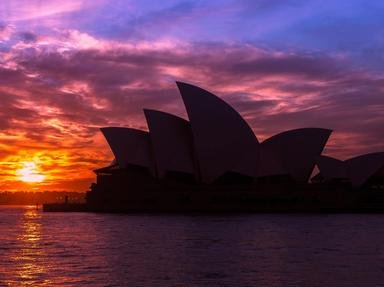Quiz Answer Key and Fun Facts
1. Australian Bicentennary celebrations occur.
2. Darwin, Northern Territory is bombed by enemy forces in an air raid.
3. The Commonwealth of Australia is proclaimed.
4. The Sydney Opera House opens.
5. Australian involvement in the Battle of Gallipoli begins.
6. Australian Prime Minister Harold Holt vanishes, presumably drowned.
7. The High Court of Australia decides the case Mabo v. Queensland.
8. Famed Australian race horse Phar Lap dies.
9. Bruce Gyngell becomes the first person to appear to a mass audience on Australian television.
10. Australia's Federal Government moves to Canberra.
Source: Author
bernie73
This quiz was reviewed by FunTrivia editor
gtho4 before going online.
Any errors found in FunTrivia content are routinely corrected through our feedback system.

